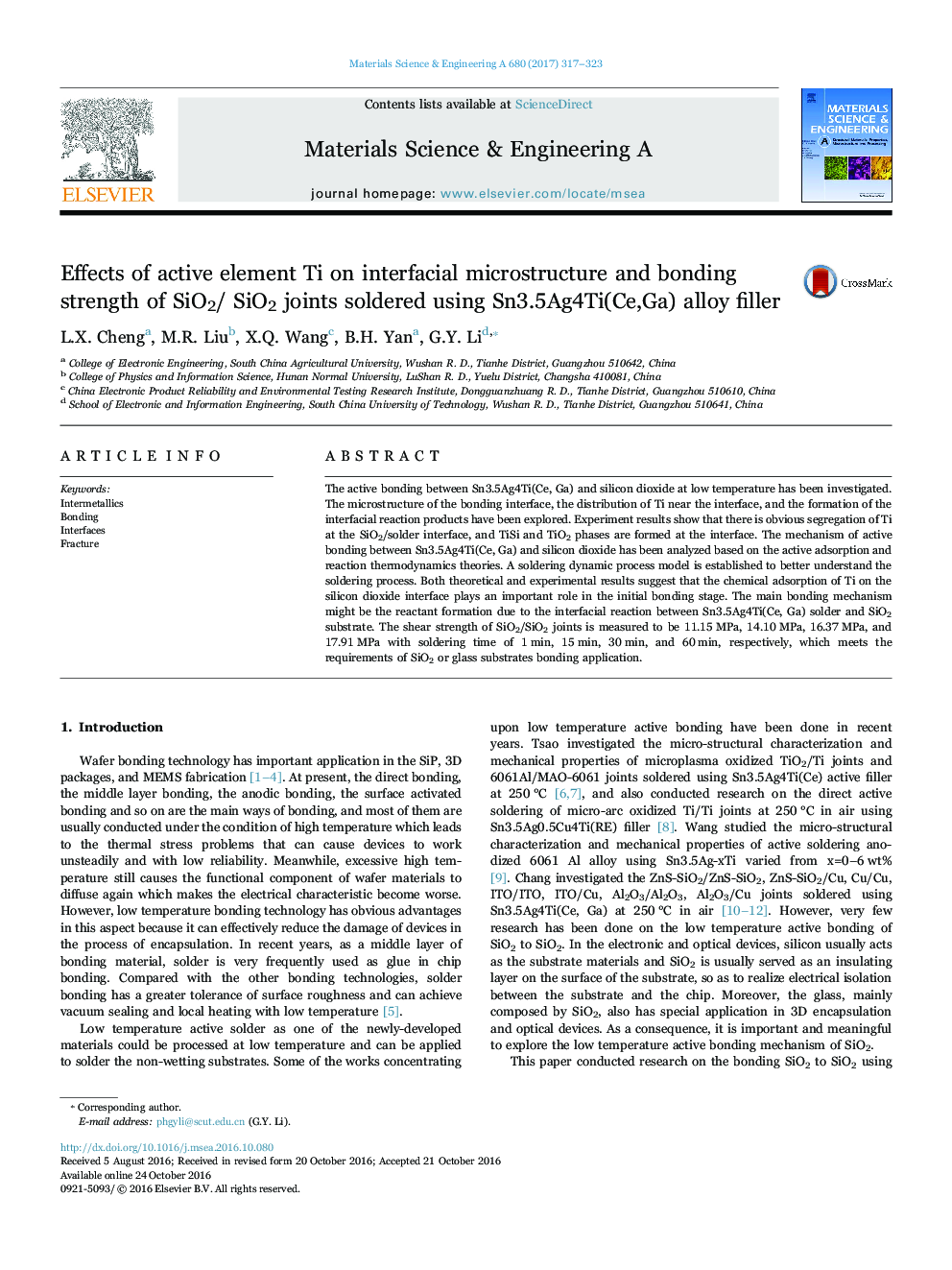| Article ID | Journal | Published Year | Pages | File Type |
|---|---|---|---|---|
| 5456773 | Materials Science and Engineering: A | 2017 | 7 Pages |
Abstract
The active bonding between Sn3.5Ag4Ti(Ce, Ga) and silicon dioxide at low temperature has been investigated. The microstructure of the bonding interface, the distribution of Ti near the interface, and the formation of the interfacial reaction products have been explored. Experiment results show that there is obvious segregation of Ti at the SiO2/solder interface, and TiSi and TiO2 phases are formed at the interface. The mechanism of active bonding between Sn3.5Ag4Ti(Ce, Ga) and silicon dioxide has been analyzed based on the active adsorption and reaction thermodynamics theories. A soldering dynamic process model is established to better understand the soldering process. Both theoretical and experimental results suggest that the chemical adsorption of Ti on the silicon dioxide interface plays an important role in the initial bonding stage. The main bonding mechanism might be the reactant formation due to the interfacial reaction between Sn3.5Ag4Ti(Ce, Ga) solder and SiO2 substrate. The shear strength of SiO2/SiO2 joints is measured to be 11.15Â MPa, 14.10Â MPa, 16.37Â MPa, and 17.91Â MPa with soldering time of 1Â min, 15Â min, 30Â min, and 60Â min, respectively, which meets the requirements of SiO2 or glass substrates bonding application.
Related Topics
Physical Sciences and Engineering
Materials Science
Materials Science (General)
Authors
L.X. Cheng, M.R. Liu, X.Q. Wang, B.H. Yan, G.Y. Li,
